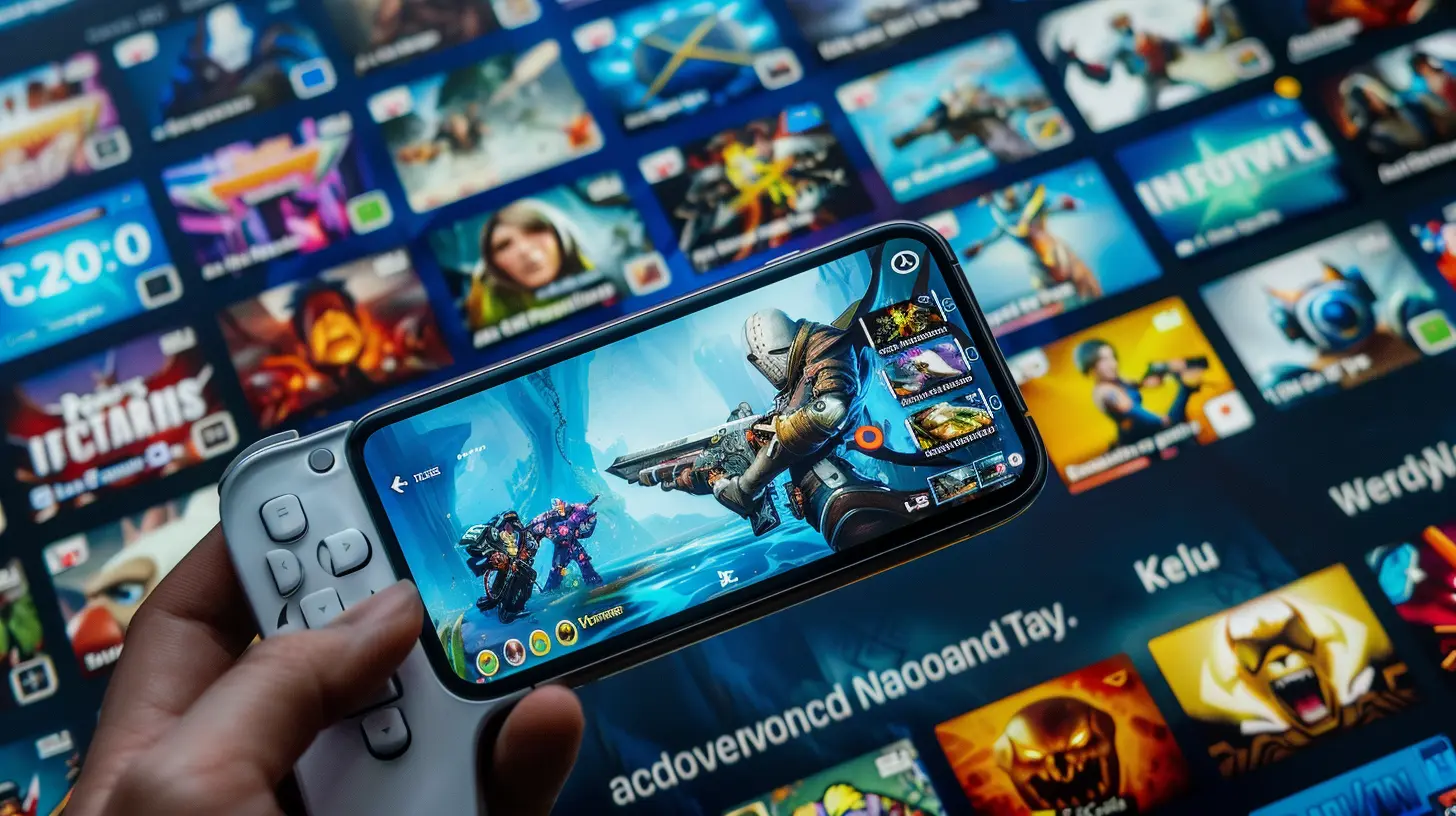Are In-Game Purchases Changing How Games Are Rated and Reviewed?
22 December 2024
The gaming industry has come a long way since the days of blowing into NES cartridges and swapping cheat codes on the playground. Games now have high-definition graphics, expansive worlds, and complex narratives. But one monumental shift in the industry deserves a closer look: in-game purchases. Whether it's buying skins, unlocking characters, or purchasing loot boxes, in-game purchases have rapidly become the norm.
But are these microtransactions influencing how games are rated and reviewed? Could that five-star review be overshadowed by pay-to-win mechanics or overpriced cosmetics? Let’s dive deep into the nexus of in-game purchases and the gaming review ecosystem.
The Rise of In-Game Purchases
Once upon a time, you paid once for a game. That was it. You saved up, bought the disc or cartridge, and got full access to everything the game had to offer. Easy-peasy, right? But as technology evolved and games increasingly transitioned online, developers saw an opportunity to monetize games beyond the initial purchase.Today, we have free-to-play models, subscription services, and of course, microtransactions. These include:
- Cosmetic purchases (skins, outfits, emotes)
- Loot boxes with randomized items
- Battle passes with tiered rewards
- Pay-to-win items (we’ll get to why these are so controversial)
While these monetization strategies are a goldmine for gaming companies, they're significantly shaping player experiences—and in turn, how critics and players rate and review games.
How Reviews Have Traditionally Worked
Before microtransactions became a thing, reviews were all about gameplay, story, graphics, and performance. A game with groundbreaking mechanics or a riveting plot was almost guaranteed high praise. For instance, think about classics like The Legend of Zelda: Ocarina of Time or The Witcher 3. They didn’t need to sell you anything extra—they let their content speak for itself.But now? Reviews aren’t just about a game’s artistic merit; they also dig into whether the experience feels like a cash grab. Players (and critics) are keeping an eagle eye on which games prioritize their wallets over skills or time investment.
Pay-to-Win: The Main Villain
Let’s talk about the elephant in the room: pay-to-win mechanics. If you’ve never heard the term, here’s the gist. In some games, players can purchase items or upgrades that offer significant in-game advantages. Instead of grinding for hours to level up or farm resources, you can just throw money at the problem and get ahead. Voila!But this model has sparked outrage in the gaming community. Remember Star Wars Battlefront II? When it launched, players were furious over the hefty grind required to unlock iconic characters—unless, of course, you forked over some cash. This led to massive public backlash, low review scores, and even a PR disaster for the publisher.
The problem is simple: Pay-to-win mechanics tilt the playing field. Players who can't afford to spend extra money feel left out or frustrated. And when reviewers mention pay-to-win, it's often accompanied by a noticeable drop in a game’s rating. 
The Cosmetic Debate: Harmless or Greedy?
Not all in-game purchases are pay-to-win, though. Cosmetics—like different skins, costumes, or emotes—don’t affect gameplay, so they’ve become the "less evil" way to monetize games. But even these seemingly harmless purchases come with controversy.Take Fortnite, for instance. The game’s dazzling array of skins and emotes keep players spending, even though none of them improve performance. Yet, some players argue that cosmetics should be included in the game you already paid for (if it’s not free-to-play). Critics also question whether the constant flow of purchasable items creates FOMO (fear of missing out), especially among younger audiences.
Suddenly, these cosmetic microtransactions don’t feel so innocent anymore.
Reviews Are Now Balancing Business and Fun
As in-game purchases have become more common, game reviews have adapted. Reviewers are no longer just dissecting the plot twists or graphics quality—they’re also examining whether a game feels predatory. Is the in-game economy designed to push players toward spending? Are there perks for those who pay versus those who don’t?Some questions reviewers now ask themselves include:
- Is the base game fun without spending extra money?
- Do microtransactions disrupt the flow or balance of the game?
- Are in-game purchases fair and reasonably priced?
When these questions highlight negative practices, it’s inevitable that a game’s rating takes a hit. After all, no one likes feeling manipulated, especially gamers who invest their time and hard-earned cash.
Player Reviews vs. Critic Reviews
Here’s where things get even more interesting—there’s often a disconnect between player reviews and critic reviews. Critics might appreciate the artistry of a game while glossing over its microtransactions. Players, on the other hand, are brutally honest. Ever scrolled through the user reviews on Steam or Metacritic? It’s an unfiltered goldmine of feedback, especially when a game gets review-bombed.Games with aggressive monetization models (cough, Diablo Immortal, cough) often face a barrage of low player ratings—even if critics give them a decent score. This disparity highlights just how much in-game purchases matter to everyday players.
Are Ratings Becoming Less Reliable?
With all the fuss over in-game purchases, you might be wondering: are game ratings even reliable anymore? Well, it’s complicated. On one hand, critics try to remain objective. On the other, players tend to review with their emotions—especially if they feel cheated.This makes the gaming landscape tricky to navigate. A game might have polished graphics and an engaging story, but players will still tear it apart if the monetization feels shady. So how do you decide if a game is worth your time and money? Honestly, it’s all about reading between the lines. Compare critic reviews with player feedback, and focus on what matters most to you.
How Developers Are Responding
It’s not all bad news. Some developers are listening. Take CD Projekt Red and Cyberpunk 2077, for example. Despite a rocky launch, they patched bugs, provided free content updates, and avoided predatory microtransactions. Players noticed, and their goodwill helped mend the game’s reputation.Other companies are experimenting with different models. For instance, some games integrate in-game purchases in more ethical ways, such as donating portions of proceeds to charity (Warframe does this). Others are sticking to strictly cosmetic items or avoiding paid content altogether for competitive modes (Apex Legends, anyone?).
It’s clear that developers are aware of the backlash—and some are taking steps to restore trust.
What Does the Future Hold?
Where do we go from here? One thing’s for sure: in-game purchases aren’t going anywhere. They’re too lucrative for developers to abandon. But we may see some shifts toward more player-friendly practices. Transparency, for one, is becoming increasingly important. Players want to know exactly what they’re paying for—no hidden odds, no sneaky paywalls.Game reviews, too, will likely continue evolving. As in-game purchases remain a hot-button issue, reviewers will need to balance technical merit with fairness. At the end of the day, players just want to know one thing: Is the game worth it?
Final Thoughts: Are In-Game Purchases Changing the Landscape?
In short: absolutely. In-game purchases have transformed not just how we play, but how we evaluate games. What used to be a straightforward "buy once, play forever" model has morphed into a complex web of subscriptions, DLCs, and microtransactions that deeply affect ratings and reviews.The good news? Players are more vocal than ever. And with critics paying close attention, developers are being held accountable. While it’s clear that in-game purchases aren’t going away anytime soon, the gaming community has the power to shape how they’re implemented.
So next time you’re browsing through reviews, take a closer look. Are those low ratings about bad gameplay—or a cash-grabbing economy? Your wallet—and your gaming experience—deserve to know.
all images in this post were generated using AI tools
Category:
In Game PurchasesAuthor:

Madeleine McCaffrey
Discussion
rate this article
13 comments
Zephyra Evans
Next time I get rated, I’ll just throw in some in-game currency. How's that for value?
February 5, 2025 at 5:20 AM

Madeleine McCaffrey
In-game currency can influence player experience, but it shouldn't replace the core value of a game's content and mechanics when it comes to ratings and reviews.
Mistral Hill
Embrace change, evolve your gaming experience!
January 31, 2025 at 3:32 AM

Madeleine McCaffrey
Absolutely! Embracing change through in-game purchases can lead to new gameplay experiences, but it also raises important questions about fairness and value in ratings and reviews.
Emery Wyatt
This article raises important questions about the impact of in-game purchases on ratings and reviews. It highlights how monetization strategies can influence player experiences and perceptions, ultimately reshaping the gaming landscape. Great insights!
January 26, 2025 at 5:21 AM

Madeleine McCaffrey
Thank you for your thoughtful comment! I'm glad you found the insights valuable. The influence of monetization on player perception is indeed a crucial aspect of the evolving gaming landscape.
Trevor Gill
In-game purchases significantly impact player experience and perceptions. As they become more prevalent, reviews must consider their influence on gameplay and overall enjoyment to provide balanced assessments.
January 21, 2025 at 4:00 PM

Madeleine McCaffrey
Absolutely! In-game purchases are reshaping reviews by influencing player experiences and perceptions, making it essential for assessments to address their impact on gameplay and enjoyment.
Charlotte Coffey
Because who needs fair ratings?
January 18, 2025 at 4:00 PM

Madeleine McCaffrey
Fair ratings are crucial for maintaining credibility and trust in reviews, ensuring that players make informed decisions.
Lulu Franco
Great article! It’s fascinating how in-game purchases are reshaping the gaming landscape. They definitely influence player experience and perceptions, making ratings more nuanced than ever. I’m curious to see how reviewers adapt their criteria moving forward. What do you think the future holds for game evaluations?
January 14, 2025 at 4:53 AM

Madeleine McCaffrey
Thank you! I agree—game evaluations are becoming more complex as in-game purchases evolve. Reviewers will likely adapt by considering player experience and monetization strategies more critically, leading to a more nuanced approach in their assessments. It'll be interesting to see how this shapes the industry!
Misty Duffy
Great article! It’s fascinating to see how in-game purchases are reshaping the gaming landscape. They add a new layer to player experiences and ratings. Can’t wait to see how developers balance fun and monetization in future releases!
January 8, 2025 at 6:12 AM

Madeleine McCaffrey
Thank you! I'm glad you found it interesting. It will indeed be fascinating to see how developers strike that balance moving forward!
Virginia McGuffin
This article raises an important issue in gaming today. As in-game purchases become more prevalent, they undeniably influence both ratings and reviews. It's essential for critics to consider the impact of monetization on gameplay and player experience, ensuring that their assessments reflect the true value and enjoyment of the games.
January 5, 2025 at 4:50 AM

Madeleine McCaffrey
Thank you for your insightful comment! You're absolutely right—monetization significantly affects player experience, and it's crucial for critics to account for this in their reviews.
Valeris Warren
Great read! It’s fascinating to see how in-game purchases are reshaping game ratings and reviews. This evolving landscape definitely adds another layer for gamers to consider. Looking forward to more insightful discussions on this topic!
January 1, 2025 at 5:55 AM

Madeleine McCaffrey
Thank you! I'm glad you found it interesting. Indeed, the impact of in-game purchases on ratings and reviews is a crucial topic for gamers today. I look forward to more discussions!
Isaac White
Great article! It’s fascinating to see how in-game purchases are reshaping the gaming landscape and influencing reviews. Your insights shed light on an important topic that affects gamers and developers alike. Excited to see where this discussion leads!
December 27, 2024 at 4:10 PM

Madeleine McCaffrey
Thank you for your thoughtful comment! I'm glad you found the discussion valuable. It's an important topic, and I'm excited to explore it further!
Oberon Cannon
Great article! 🎮 It’s interesting to see how in-game purchases shape our gaming experiences and reviews. Balancing fun and fairness in gaming is a hot topic these days!
December 23, 2024 at 5:50 PM

Madeleine McCaffrey
Thank you! I'm glad you found it interesting. The impact of in-game purchases on gaming experiences and reviews is indeed a crucial discussion in the industry!
Katherine Alexander
Great article! It’s really interesting to see how in-game purchases impact game ratings and reviews. As a gamer, I appreciate a balanced approach that considers both gameplay and monetization. This shift could reshape the gaming landscape in meaningful ways.
December 23, 2024 at 5:38 AM

Madeleine McCaffrey
Thank you for your insightful comment! I'm glad you found the article engaging and appreciate your perspective on the balance between gameplay and monetization. It’s a critical discussion for the future of gaming!
Sloan Rios
In-game purchases are reshaping the gaming landscape, influencing not just how we play, but how we evaluate our experiences. It’s time for gamers and reviewers alike to adapt, championing transparency and integrity in an evolving industry. Let's redefine our standards for joy!
December 22, 2024 at 3:36 AM

Madeleine McCaffrey
Absolutely! In-game purchases are indeed transforming both gameplay and evaluation metrics, urging us to prioritize transparency and integrity in our reviews. It's essential to adapt our standards to reflect this evolution, ensuring a fair assessment of gaming experiences.
MORE POSTS

Legendary Consumables: Rare Items for Emergency Wins

Top Role-Playing Games for Teen Gamers
The Story Behind Konami’s Iconic Games and Their Decline

Competitive Multiplayer Shooters: Are They Evolving Fast Enough?

Early Access Games That Bring Fresh Twists to Genres You Love

Narrative-Driven Games That Speak to Today’s Teens

Essential Xbox Tips and Tricks for New Console Owners

How Virtual Reality Could Revolutionize the Future of E-Sports

Early Access Games That Reinvented Themselves After Player Feedback